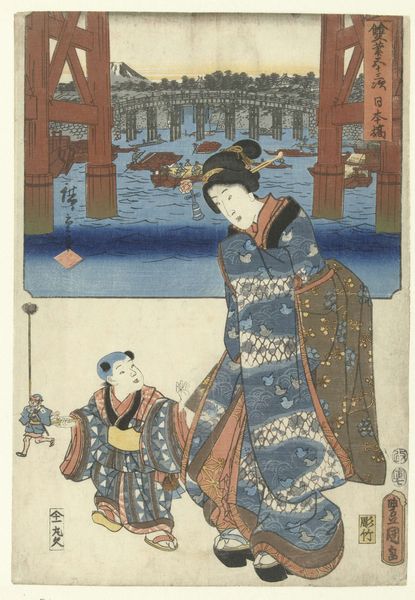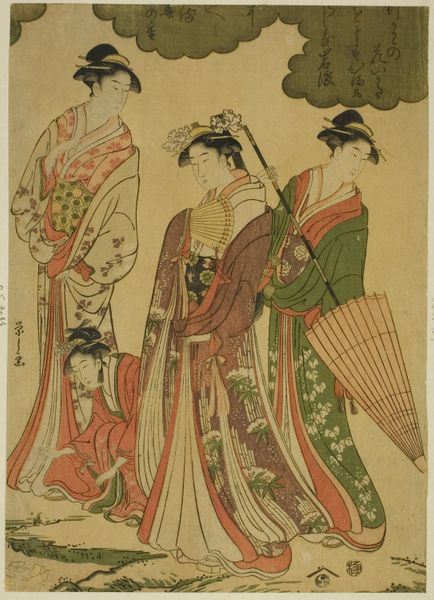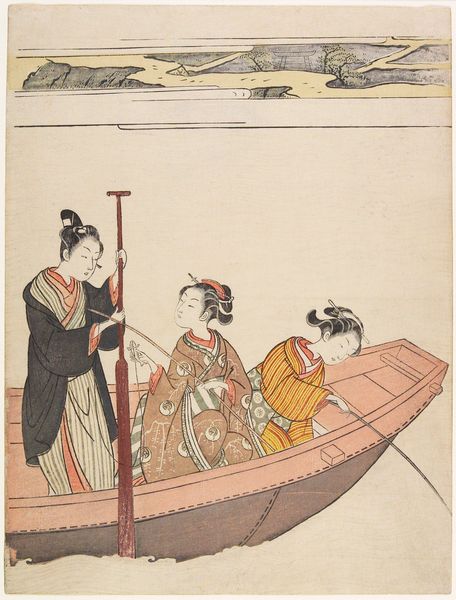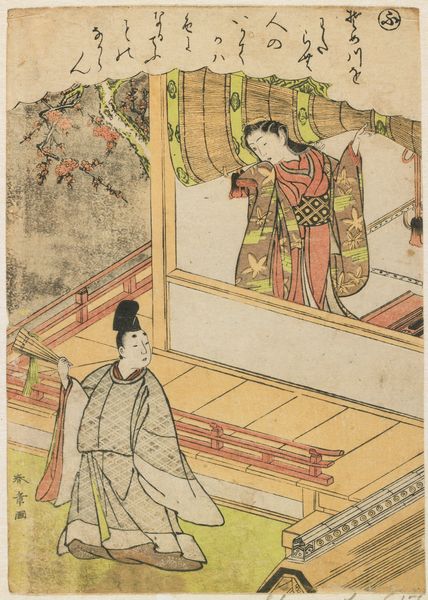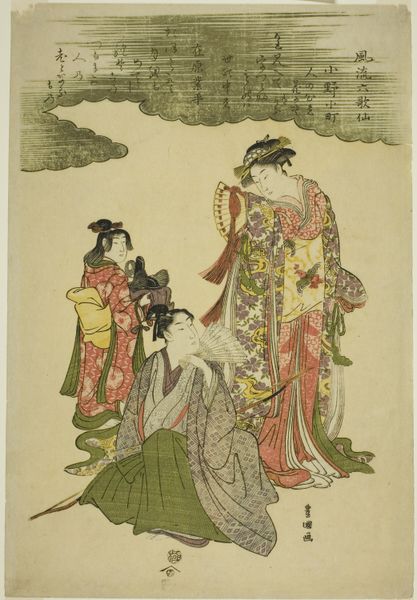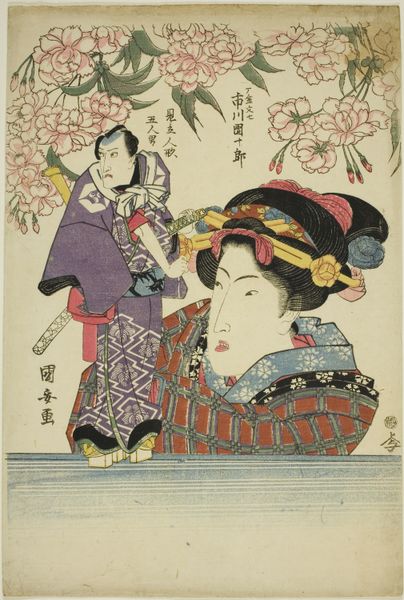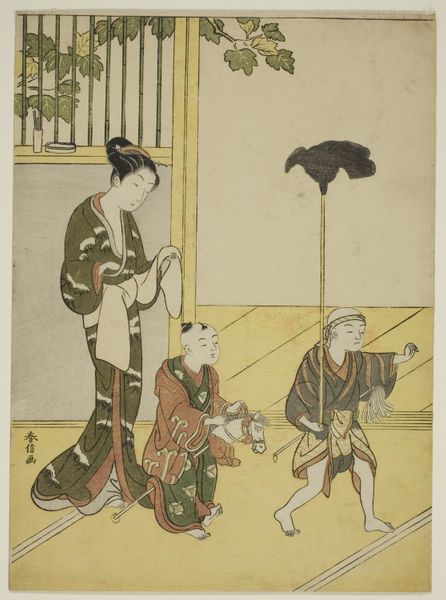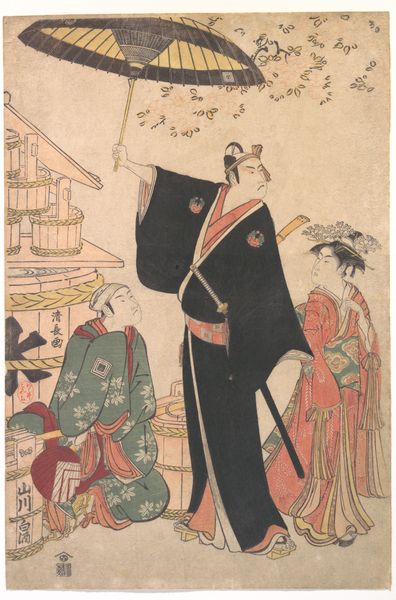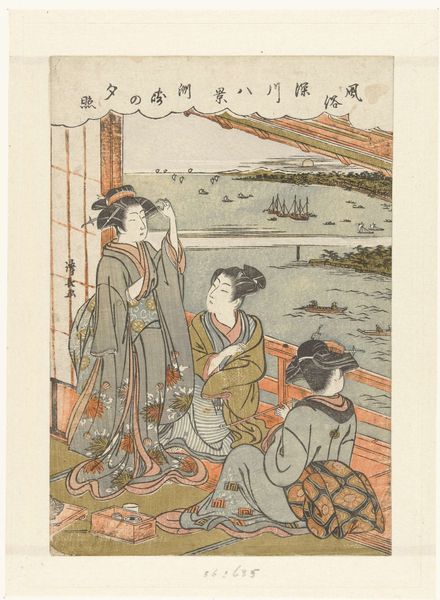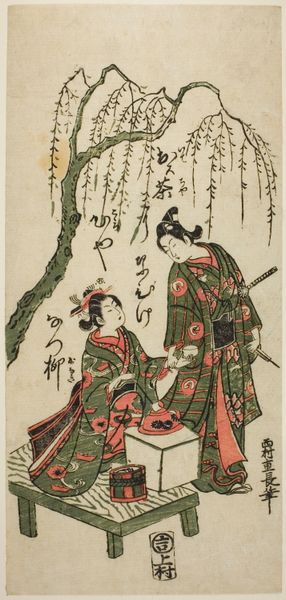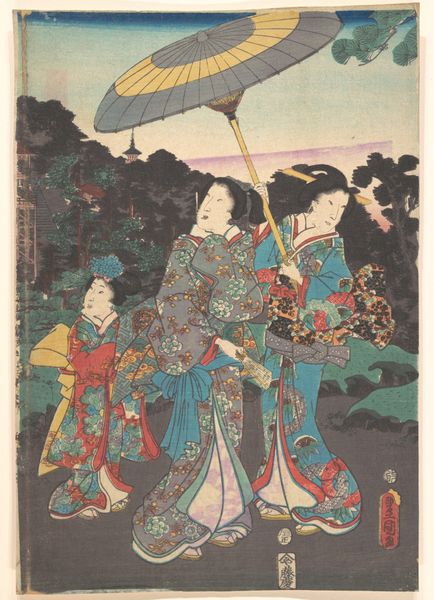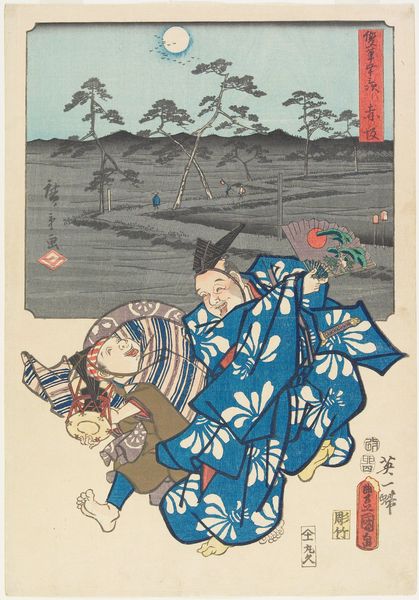
print, paper, ink, woodblock-print
# print
#
asian-art
#
landscape
#
ukiyo-e
#
japan
#
figuration
#
paper
#
ink
#
woodblock-print
Dimensions: 14 3/4 × 10 3/16 in. (37.5 × 25.8 cm) (image, vertical ōban)
Copyright: Public Domain
Editor: This is "Okazaki," a woodblock print by Utagawa Kunisada, made around 1855. The vibrant colours immediately catch my eye, especially the blues and reds against the figures' patterned robes. It seems like a bustling scene, but with an underlying sense of formality. What do you see in this piece that speaks to its cultural and historical significance? Curator: I'm drawn to the way the print uses layering. See how the bridge leads our eye into the landscape, creating depth but also a symbolic connection between the human figures and the natural world behind them? Consider the bright red of the bridge – red often represents vitality, joy and even warning. Its prominence in this scene isn’t accidental. What memories, emotions, or social connections might have been embedded within the image of a bridge during this era? Editor: That's fascinating! The bridge almost feels like a stage, connecting different aspects of life. It also brings a peaceful moment of connection, human and natural. Curator: Precisely. Think about ukiyo-e as a genre; it captures the “floating world.” What aspects of this “floating world”—daily life, leisure, travel—are being reflected and memorialized here through the lens of figures, and of landscape, as mirror and support? This image doesn't simply depict a journey; it hints at the narratives, traditions and experiences that resonate within the Okazaki landscape, bridging past and present. Editor: This makes me appreciate the depth of the print. It’s not just a pretty picture, but a story laden with symbolism and a snapshot of Japanese society in that era. I missed the depth the first time I looked at it. Curator: Exactly, and that is how imagery maintains a potent power! A work like this rewards careful contemplation, and reveals to us a collective cultural memory.
Comments
minneapolisinstituteofart almost 2 years ago
⋮
Minamoto Yoshitsune was a warrior who lived in the late 12th century. His father was killed by a rival clan when he was a child and, together with his mother and brother, he was sent into exile. As a young adult he became a powerful warrior and avenged his father's death. Later, however, he was betrayed by his brother and died at the age of thirty, becoming one of Japan's great tragic heroes. Many legends arose about Yoshitsune's life, and these became popular themes for Kabuki and puppet plays. One such story involves the beautiful daughter of a wealthy man in the town of Yahagi near the great bridge of Okazaki pictured by Hiroshige in this print. Known as princess Jo_ruri, the woman is said to have had a one-night love affair with the young Yoshitsune. Later, when he was ill and exhausted from combat, she nursed him back to health. Here, the two young lovers are depicted by Kunisada as if sneaking off for a secret tryst.
Join the conversation
Join millions of artists and users on Artera today and experience the ultimate creative platform.
